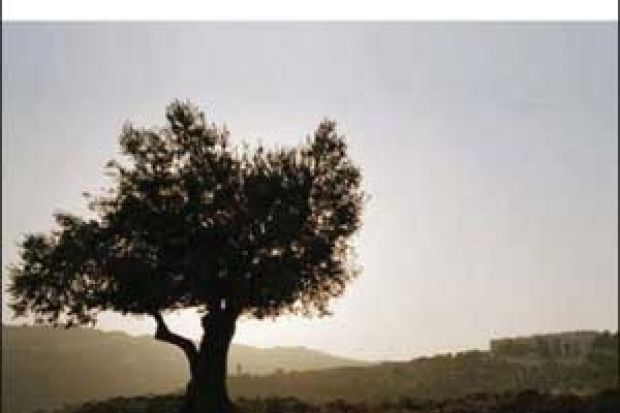Peaceful Resistance: Building a Palestinian University under Occupation
By Gabi Baramki (with a foreword by Jimmy Carter)
Pluto Press
232pp, £60.00 and £17.99
ISBN 9780745329321 and 29314
Published 1 February 2010
It is a remarkable achievement when an educational institute continues to operate in the context of violence and occupation. One such institute stands out: Birzeit University in Palestine. Here, Gabi Baramki, Birzeit's acting president for 19 years, explores its evolution from its birth in 1924 through its adulthood in the 1960s and extremely difficult conditions in the 1980s. He recounts how a small college, which in 1972 became a university offering four-year degrees, against all odds came to be one of the most prestigious and progressive universities in the Arab world.
As I was reminded during fieldwork in 2009, Birzeit is one of a kind. It is an icon of the Palestinian national movement and has shaped political activism in many ways. Palestinians in the Arab diaspora fantasise about studying there and, because of its unique diversity and political engagement, its student council elections are closely followed since the results reflect the general political mood.
As a new generation grew up, the impact of the shock and loss of the 1948 Nakba and the sense of defeat after the 1967 war and occupation of the remainder of Palestine slowly dissipated and gave way to a mood of rebellion. Birzeit's inspirational role was also a threat to Israel as the university became politicised and students led the grassroots struggle in the 1980s.
Baramki's unsparing account sometimes grabs you by the throat. As they sought to get and give education, students and staff attempting to bypass checkpoints would be beaten and subjected to humiliating treatment. Student activists as young as 16, Baramki recounts, were captured, tortured and killed.
Many chapters (particularly "'Shaking off' and being shaken" and "Harassment and hair gel") contain breathtaking accounts of Israeli soldiers marching into campus, the army surrounding the university and the raiding of dormitories. But underpinning these stories are many amusing anecdotes of tactical manoeuvrings and students' political agency.
I was particularly interested in the chapter "Networking around the world". Until the Oslo Accords in 1993, fax machines were forbidden by military order and direct communication with the Arab world was illegal. Ways to work around these strictures included secret communication by three-way phone conversations, smuggling documents in and out and a hidden fax machine - rebellious acts that were evidence of the hunger for education. These conditions seem light years away from the current situation where the internet allows Birzeit to overcome (at least in part) the closures and curfews via its online portal Ritaj, web-based media campaigns and Facebook groups.
Birzeit's difficulties are many: Israel's unfair taxation; the withholding of building permits; the disappearance of books; the banning of journals; the denial of entry to visiting academics; and the deportation of its staff. Its trials underscore what Palestinians mean by "apartheid": none of this, Baramki notes, occurs at Israeli universities. More astonishingly, he says, no director or union of any Israeli university protested against their government or supported Birzeit's plight. Despite partial autonomy after the Oslo Accords, Birzeit is still confronted by great impediments. The occupation became less visible but more intense in different ways; F-16 jets and colossal walls replaced guns and flying checkpoints.
This book is an important reality check. Many of the examples Baramki cites confirm the complacency not only of the Israeli academy but also that of European universities dodging their ethical responsibilities. Calling for boycotts such as that imposed on apartheid South Africa is not easy when even passive solidarity with Palestinians can be deemed anti-Semitic. But the Campaign for the Academic and Cultural Boycott of Israel, supported by several Israeli academics and endorsed by renowned Jewish professors around the world, is gaining momentum. Moreover, a year ago universities around the world saw a wave of student occupations during Israel's destruction of Gaza.
The symbol of Birzeit is the olive tree: it can flourish under the harshest of conditions, picking its fruit is always a collective effort and the product is extremely nutritious. Peaceful Resistance tells us why the symbol is well chosen. This book is recommended to all involved with education and the Middle East.
Peaceful Resistance: Building a Palestinian University under Occupation
By Gabi Baramki (with a foreword by Jimmy Carter)
Pluto Press
232pp, £60.00 and £17.99
ISBN 9780745329321 and 29314
Published 1 February 2010
Register to continue
Why register?
- Registration is free and only takes a moment
- Once registered, you can read 3 articles a month
- Sign up for our newsletter
Subscribe
Or subscribe for unlimited access to:
- Unlimited access to news, views, insights & reviews
- Digital editions
- Digital access to THE’s university and college rankings analysis
Already registered or a current subscriber? Login
